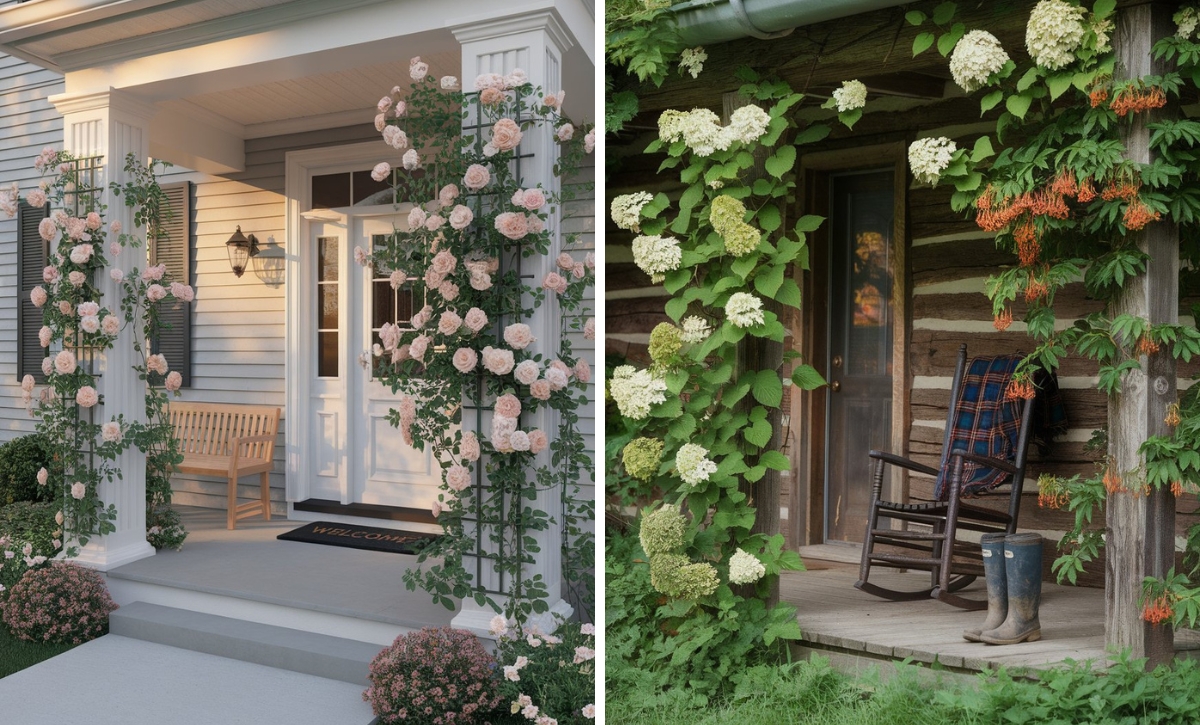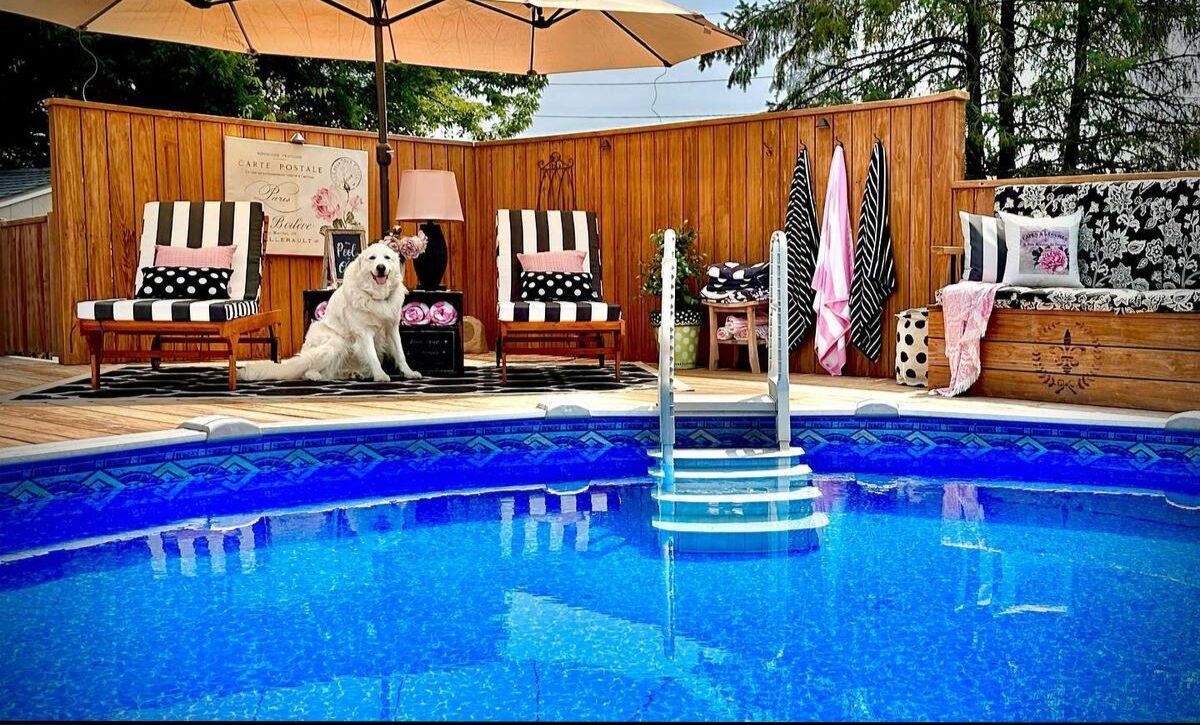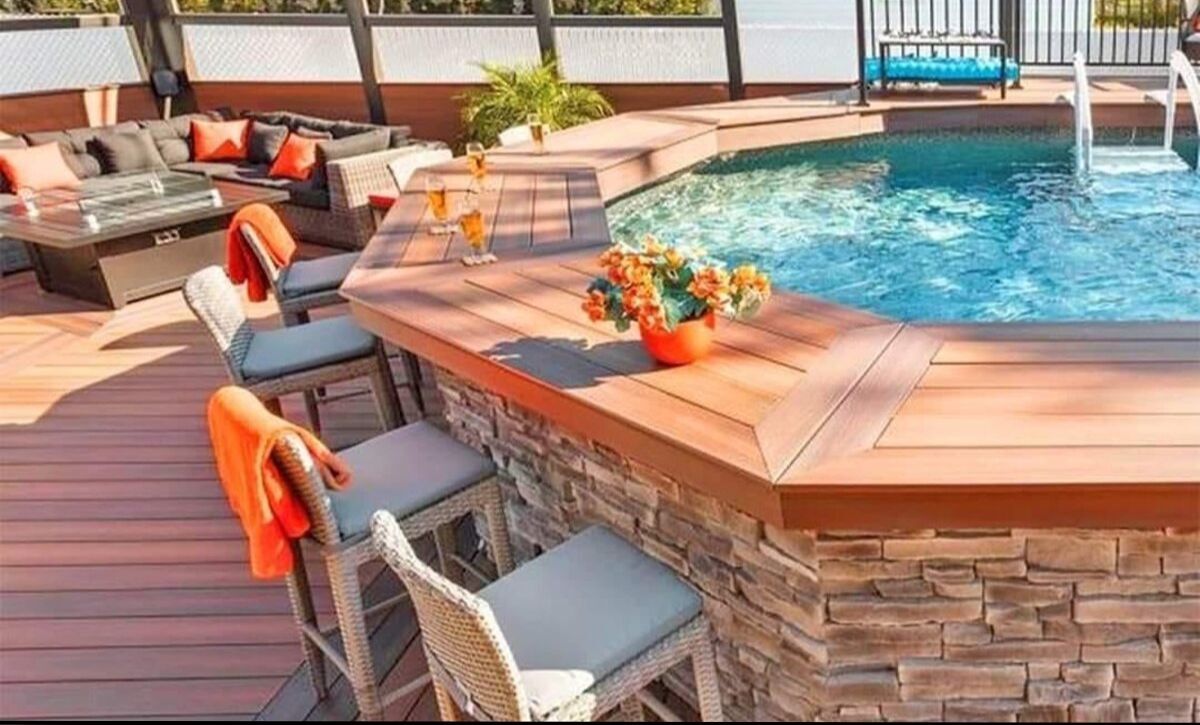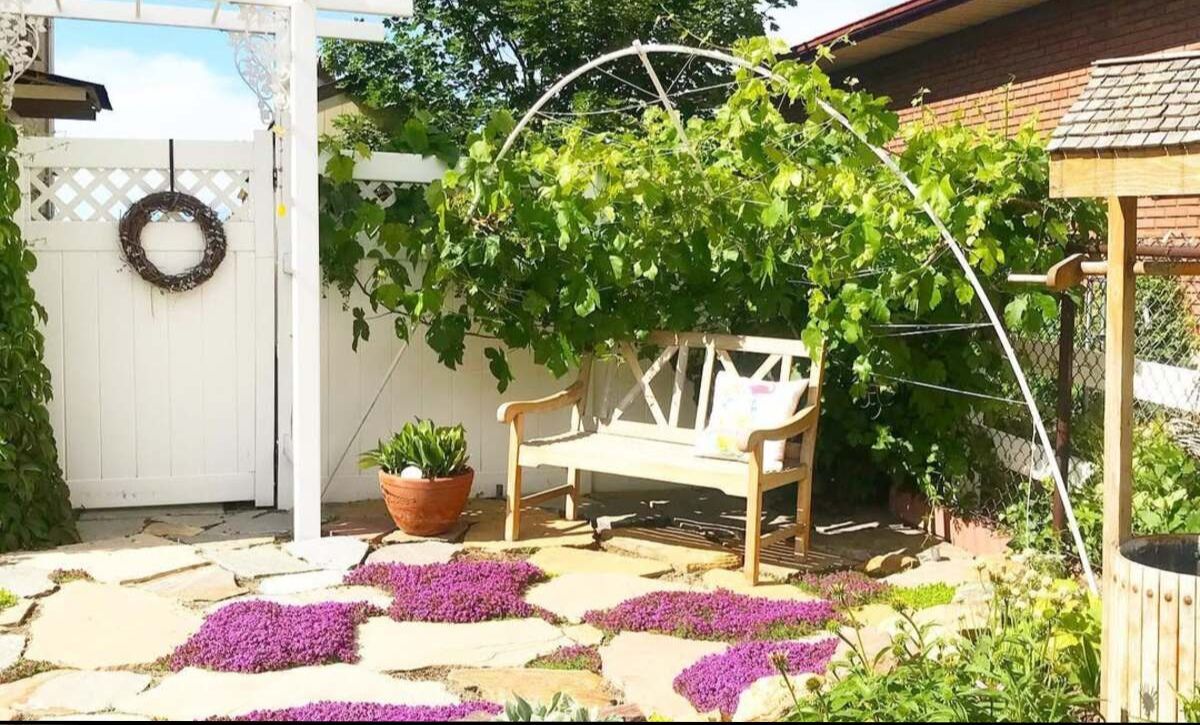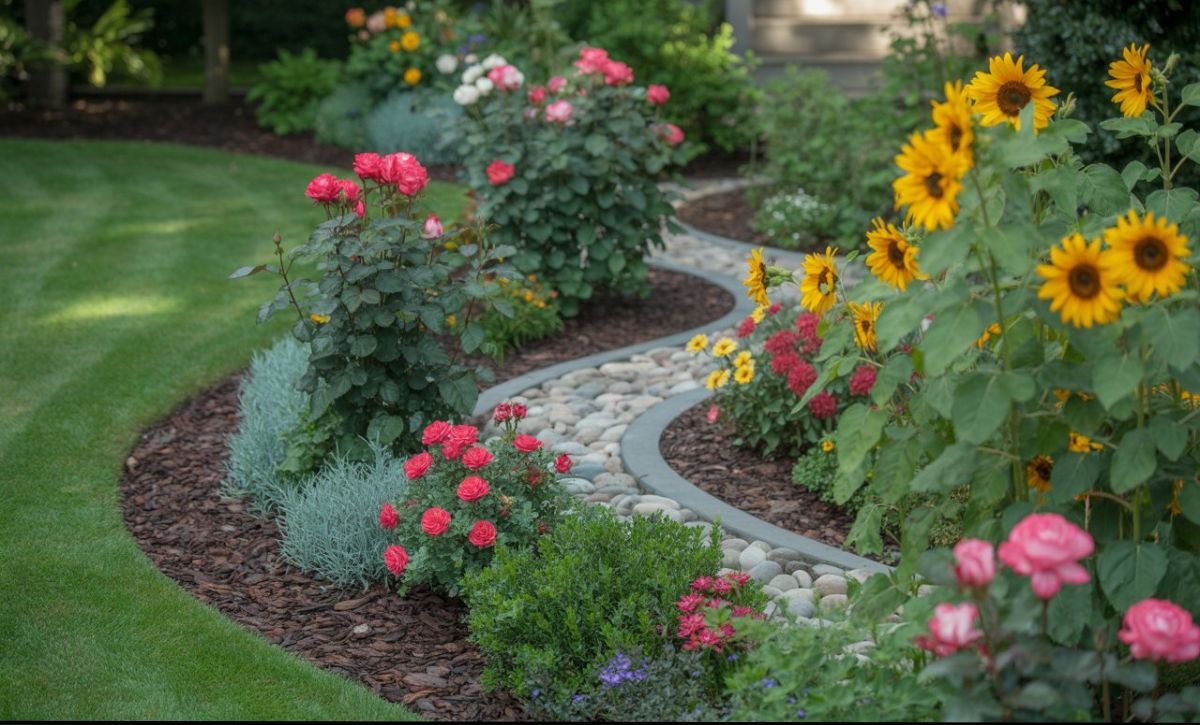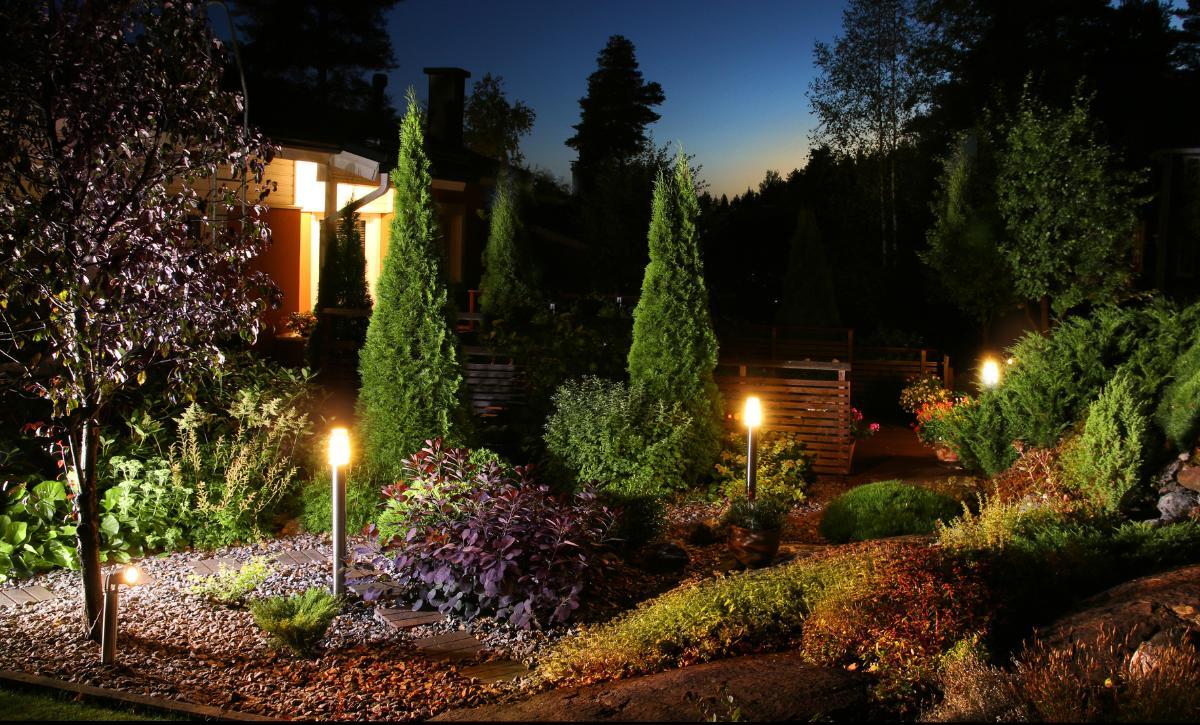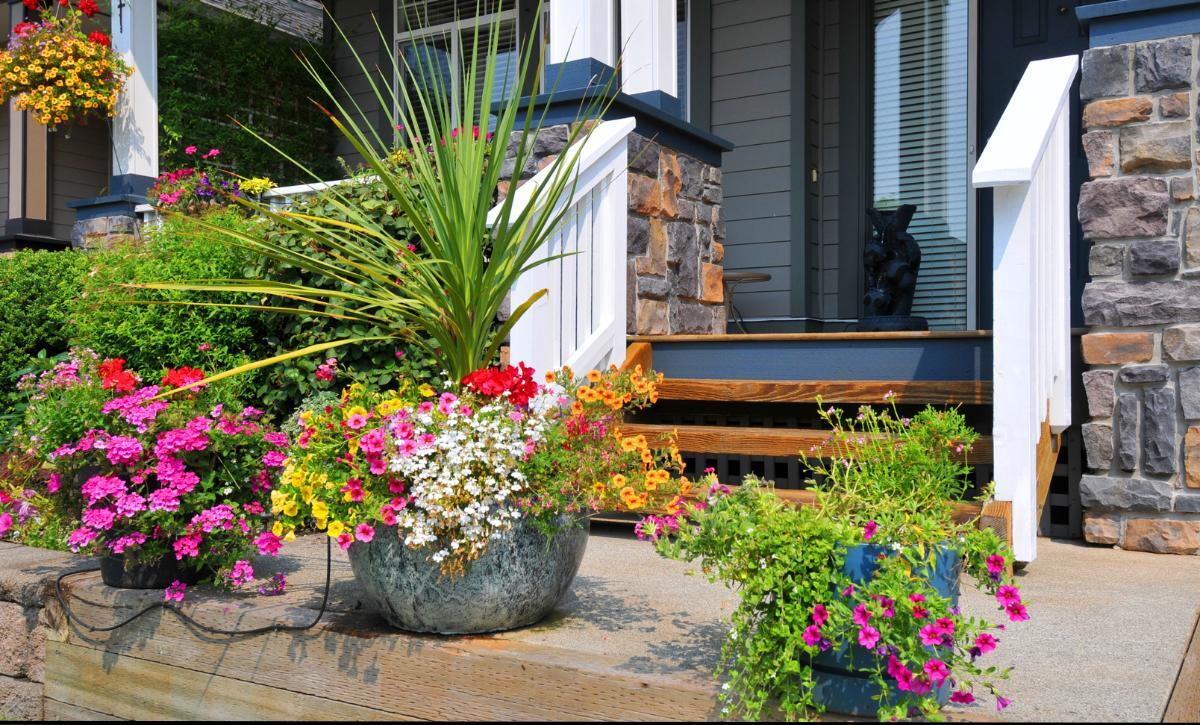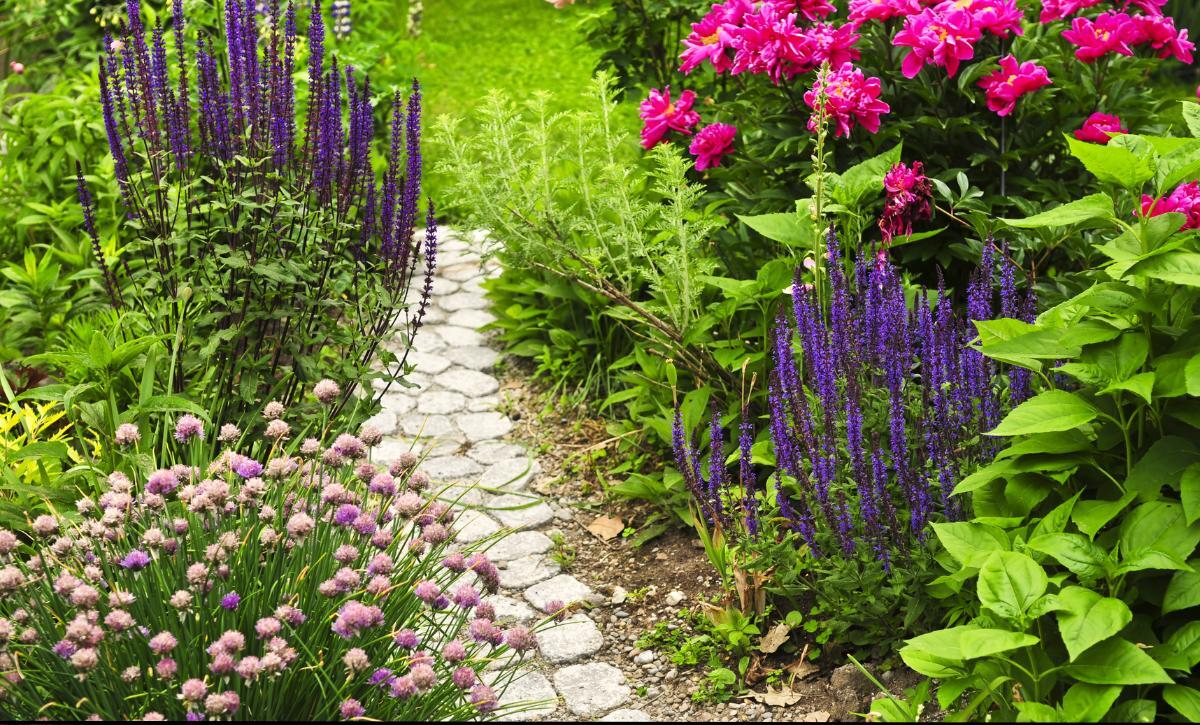Rock wall gardens can be the perfect landscaping solution if your home has uneven terrain. Generally, a rock wall garden is mainly made up of rocks designed or adapted for the growth of particular types of plants.
There are several advantages you can realize from creating this type of garden. For one, if you have rocks in your landscape, it makes more sense to incorporate them into the design rather than remove them.
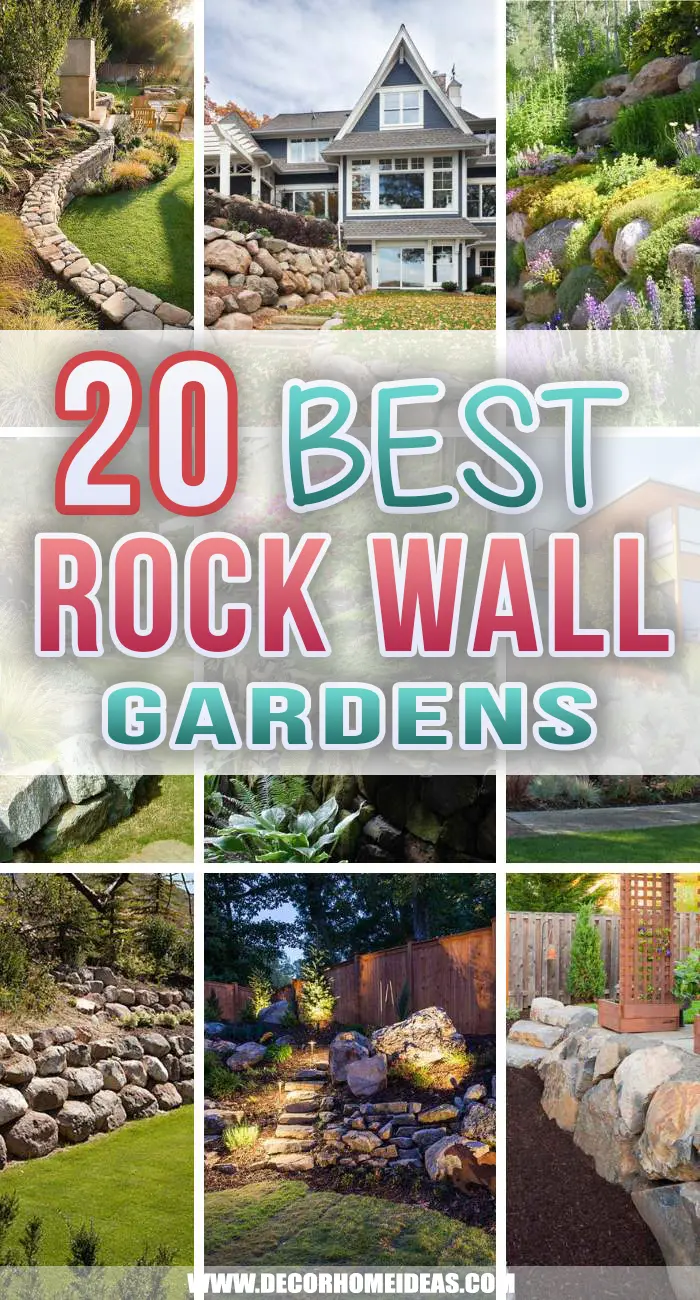
Secondly, rocks will add an excellent visual interest in a garden. Thirdly, rocks create a perfectly natural complement to features such as waterfalls and ponds.
Lastly, using rocks for a garden reduces the growth of weeds and cuts down on maintenance costs.
Design Ideas for Rock Wall Gardens
1. The Bigger, The Better
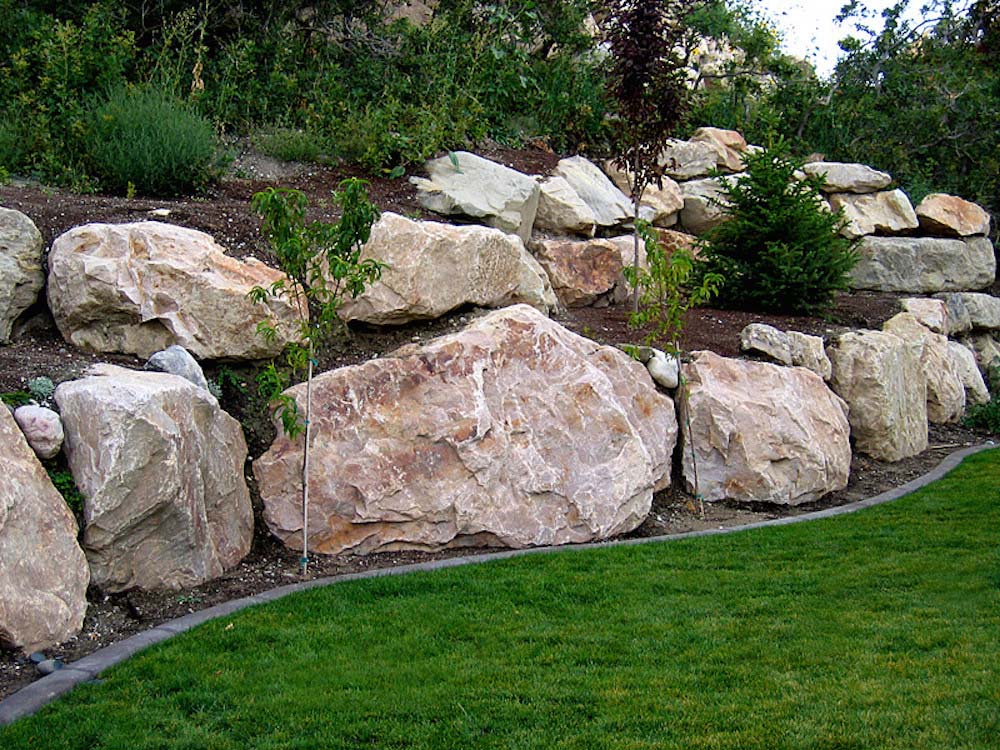
via Rockscapes
If you have a clear backyard, creating a rock wall garden with large boulders like this may be the perfect way to add visual interest and contrast to your environs.
2. Double layered Garden
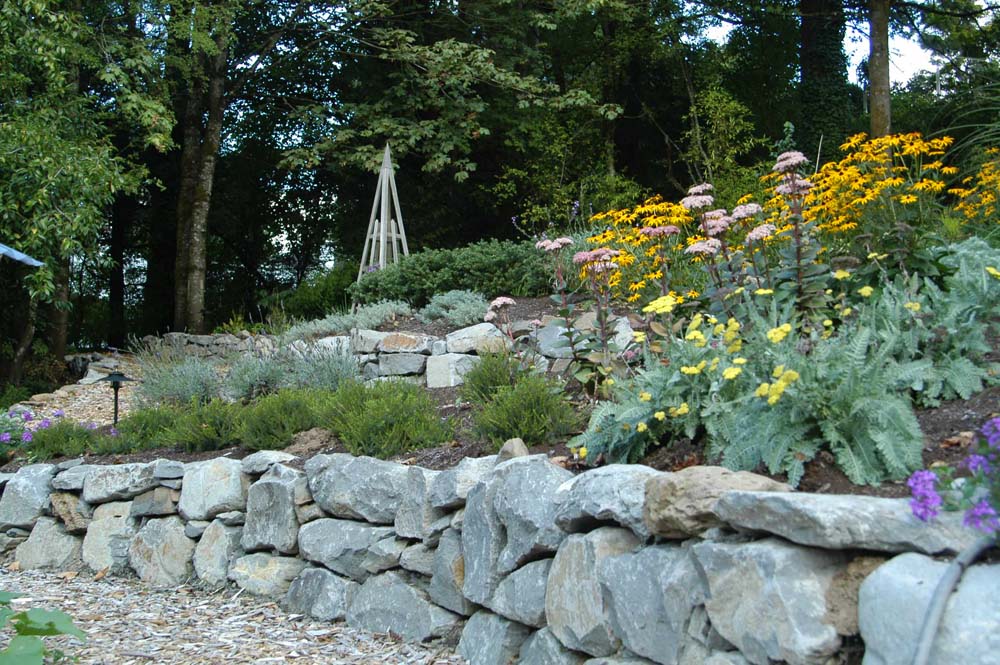
Think of installing a retaining wall. Why don’t you try two? As in this design, a double-layered retaining wall is the perfect way to create an extra garden space.
3. Flowery Mountain
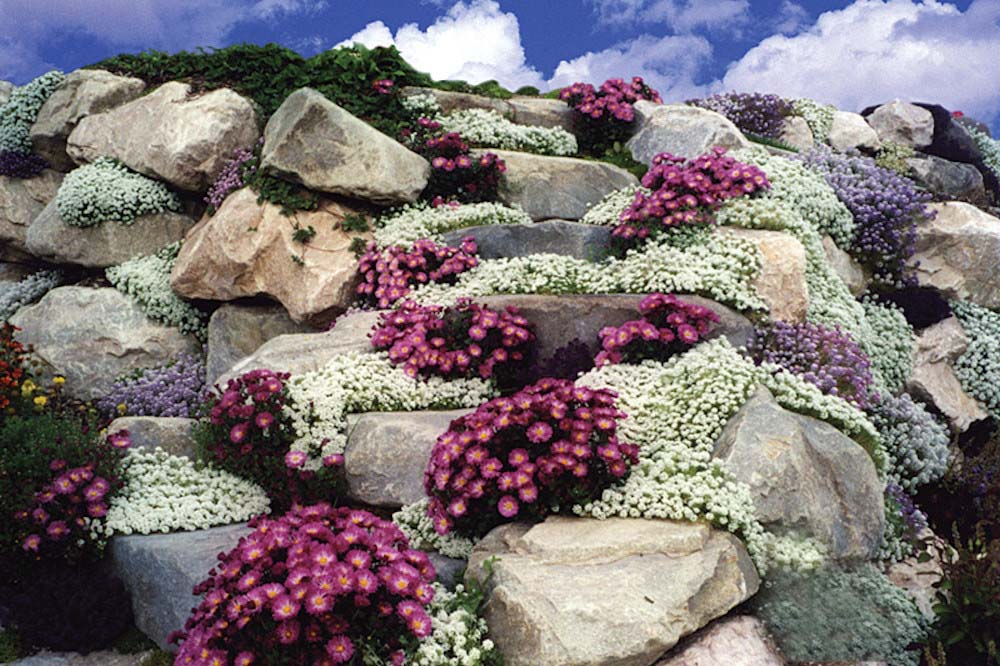
For flower lovers, growing them in a rock wall garden is the perfect way to create contrast and bring out bright, vivid colors.
4. Try a Variety of Rock Shapes.
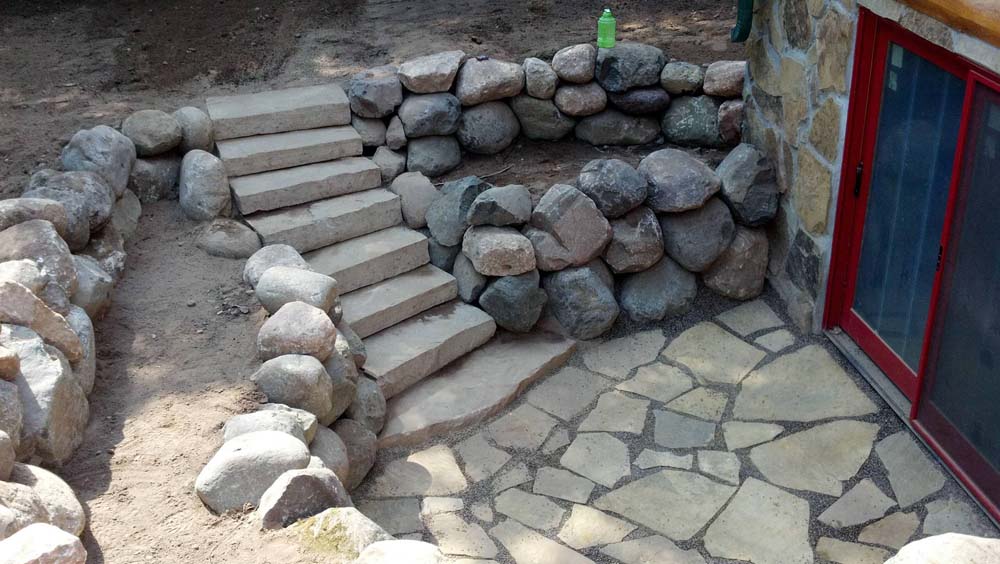
via Rick Gruel Landscaping & Design
Retaining walls may be a way to navigate a slope and incorporate different rock shapes for more visual interest in your patio.
5. Use some Mortar
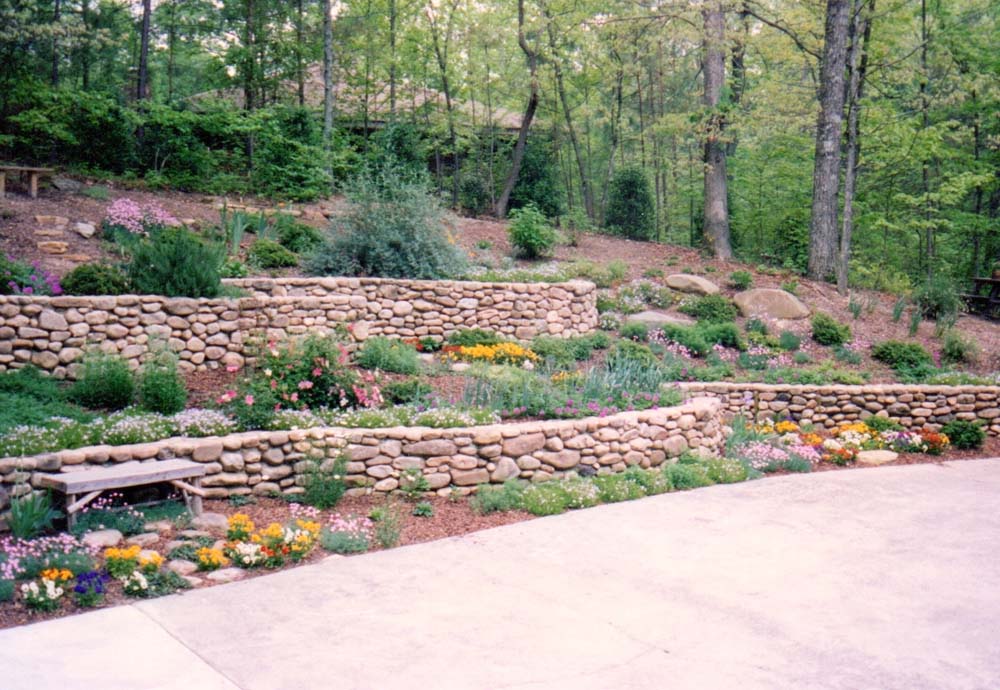
via Danna Cain
Creating a rock wall garden can be difficult, but using some mortar will make the most challenging materials agreeable.
6. Defined Space
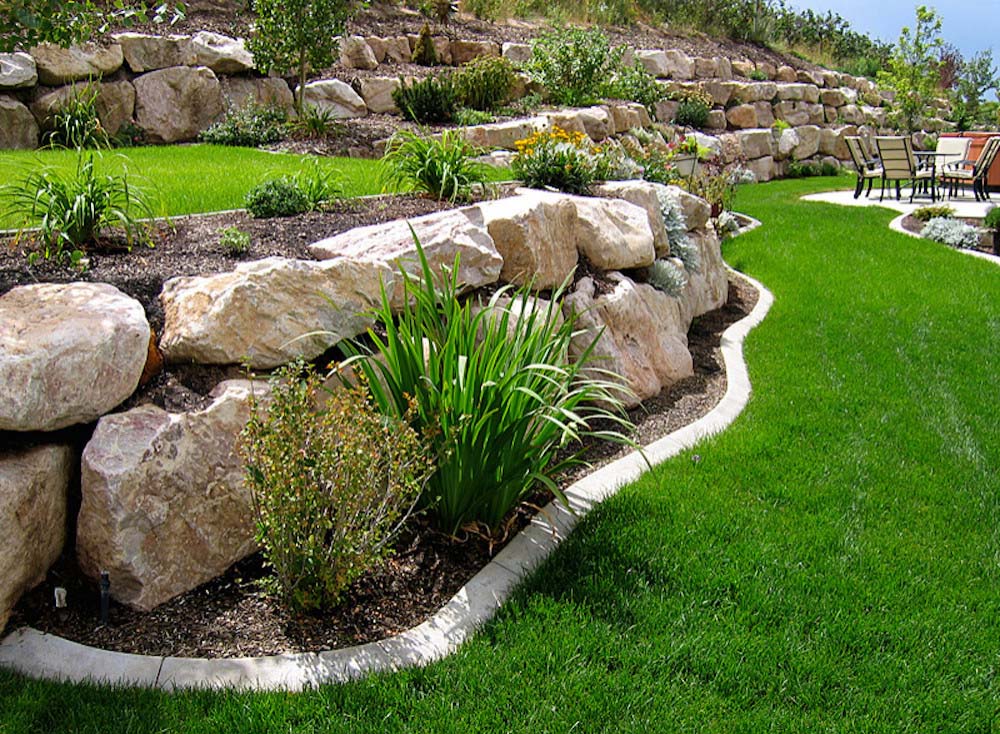
Your backyard can never be too beautiful, and creating a rock wall garden may add to this beauty, like in this backyard space with a patio.
7. Complement the Vegetation
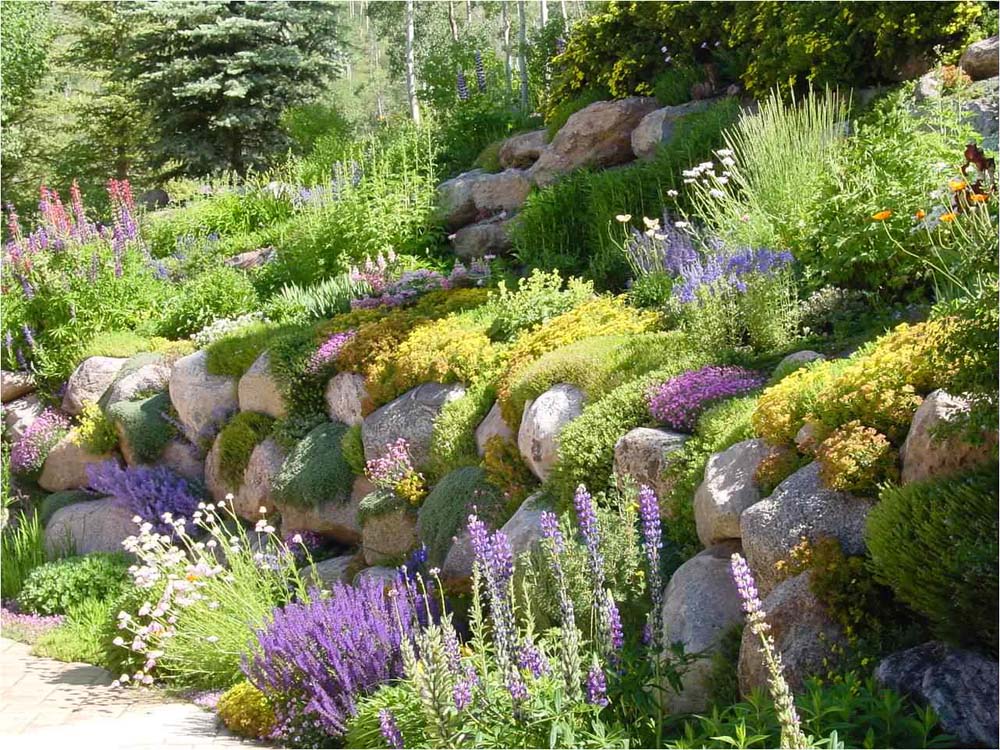
In most cases, plants complement the rock wall garden, but in this case, the rocks are used to complete this vegetative area.
8. Blend In
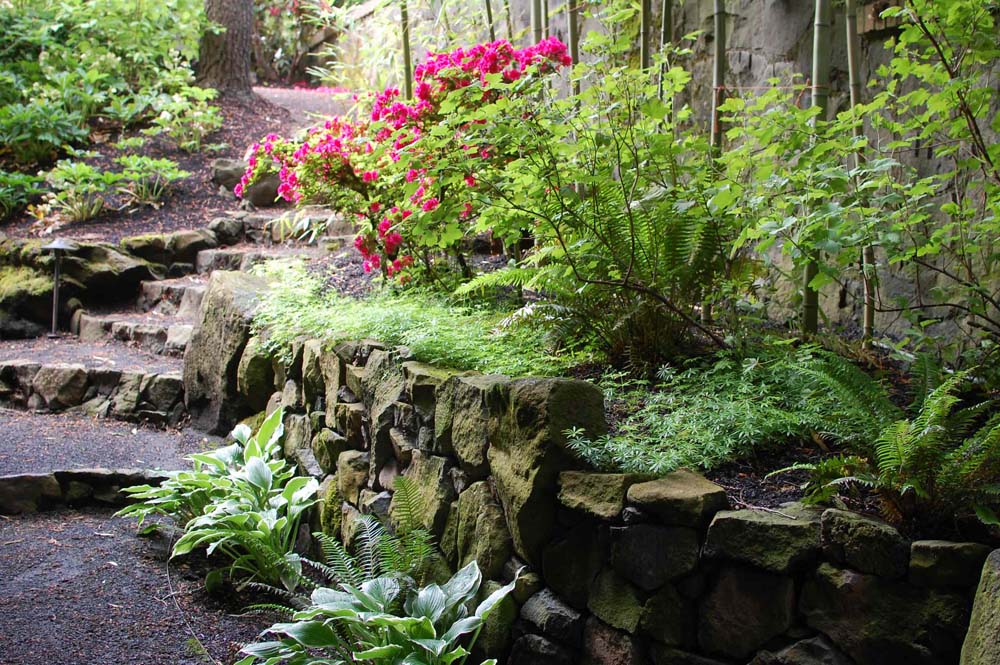
Landscaping your environment while considering the existing terrain and physical features is the perfect way to create an all-natural vibe, like in this retaining wall garden that hugs the terrain.
9. Lighten Up the Space
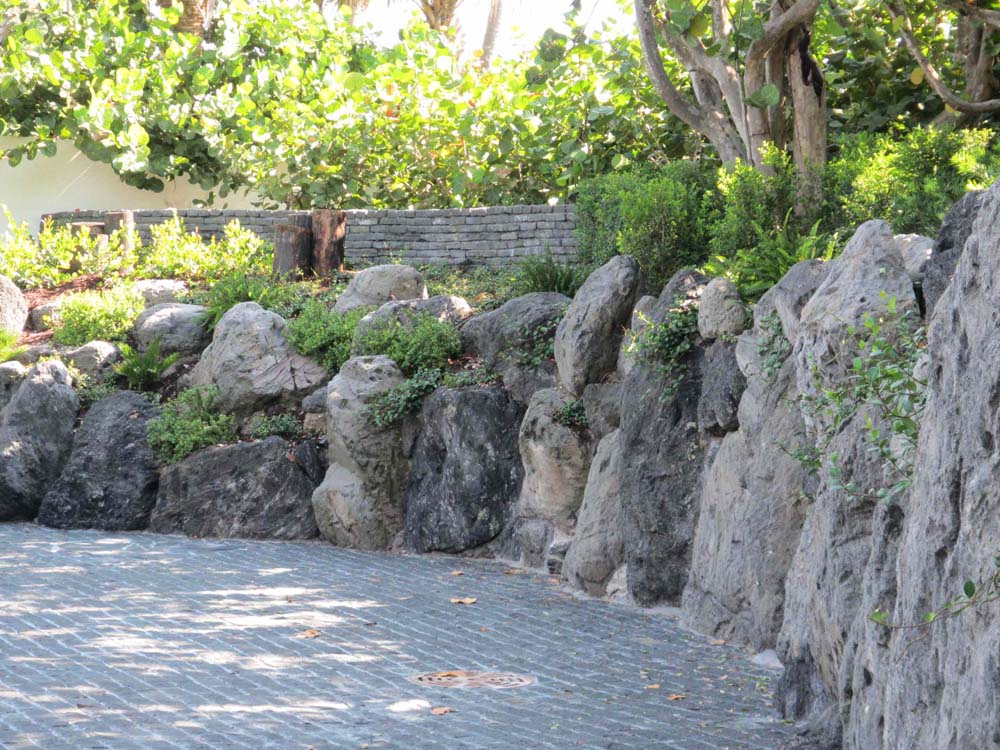
via Matthew Giampietro Garden Design
The rock garden in this design makes the place appear less dull due to the liveliness of the plants in what would be an otherwise bland space.
10. Mountainside Scene
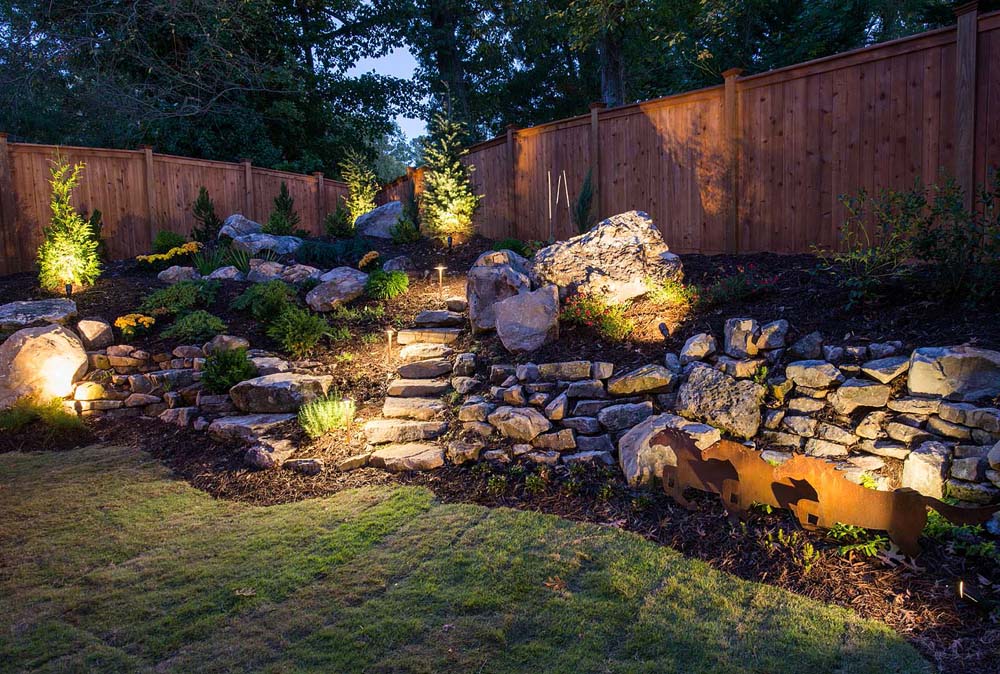
via ARNOLD Masonry & Landscape
Your Backyard doesn’t always have to be all green and dull. You can add a mountainside scenery by incorporating a rock wall garden like in this design.
11. Hold the Slope
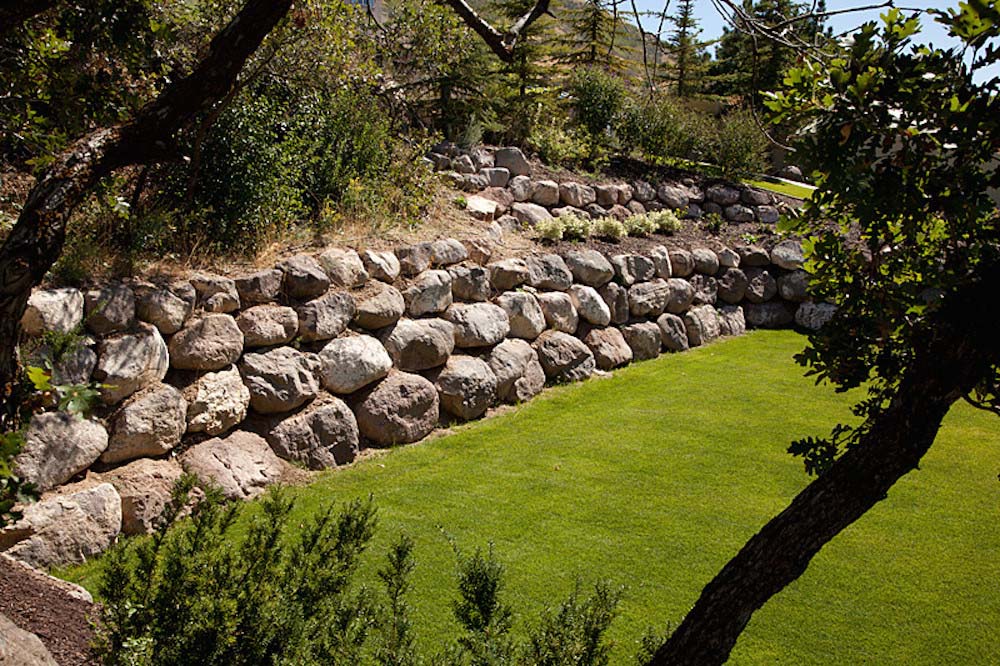
Creating a backyard on a hilly side can be challenging. Still, considering a rock wall garden can hold the slope, it becomes much more manageable.
12. Create a natural Vibe
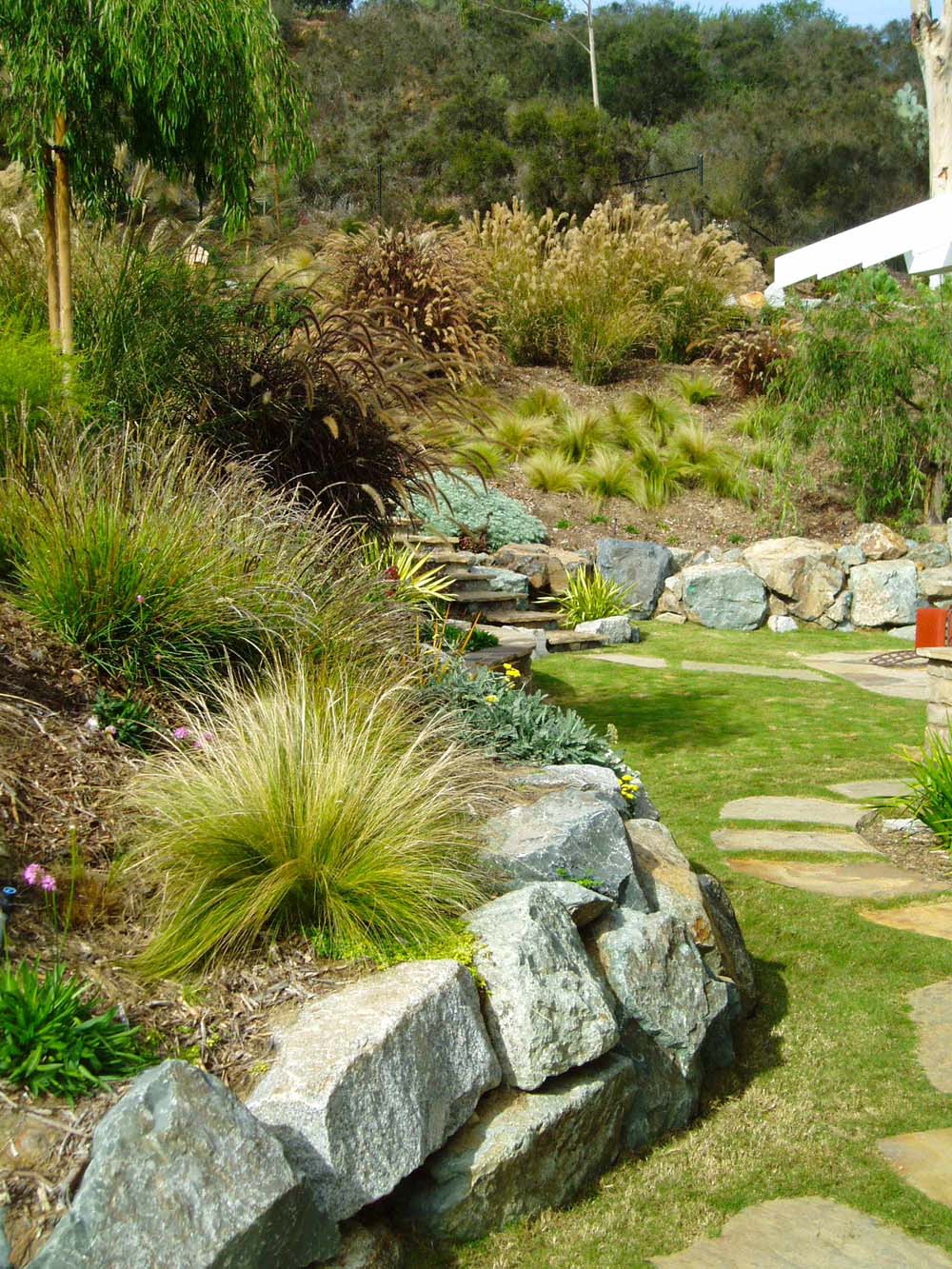
A rock wall garden can design a space and make it seamless with the surroundings, especially if you match the stones with other natural elements.
13. Add Some Character to a Rocky Slope
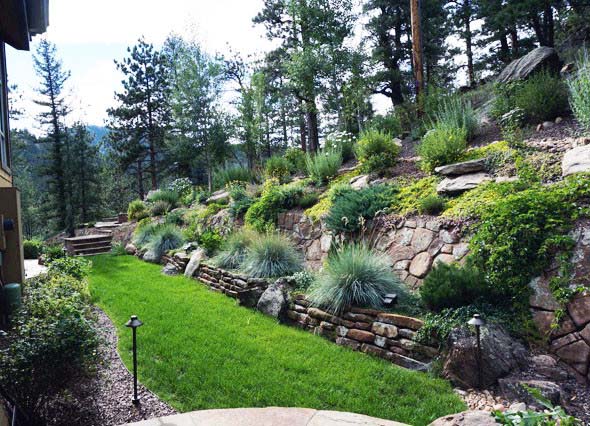
via LAND BY DESIGN
A rock wall garden can be used to improve the aesthetics of your rocky scape, like in this design, where plants are the highlight of the rock garden.
14. Incorporate into the Architecture
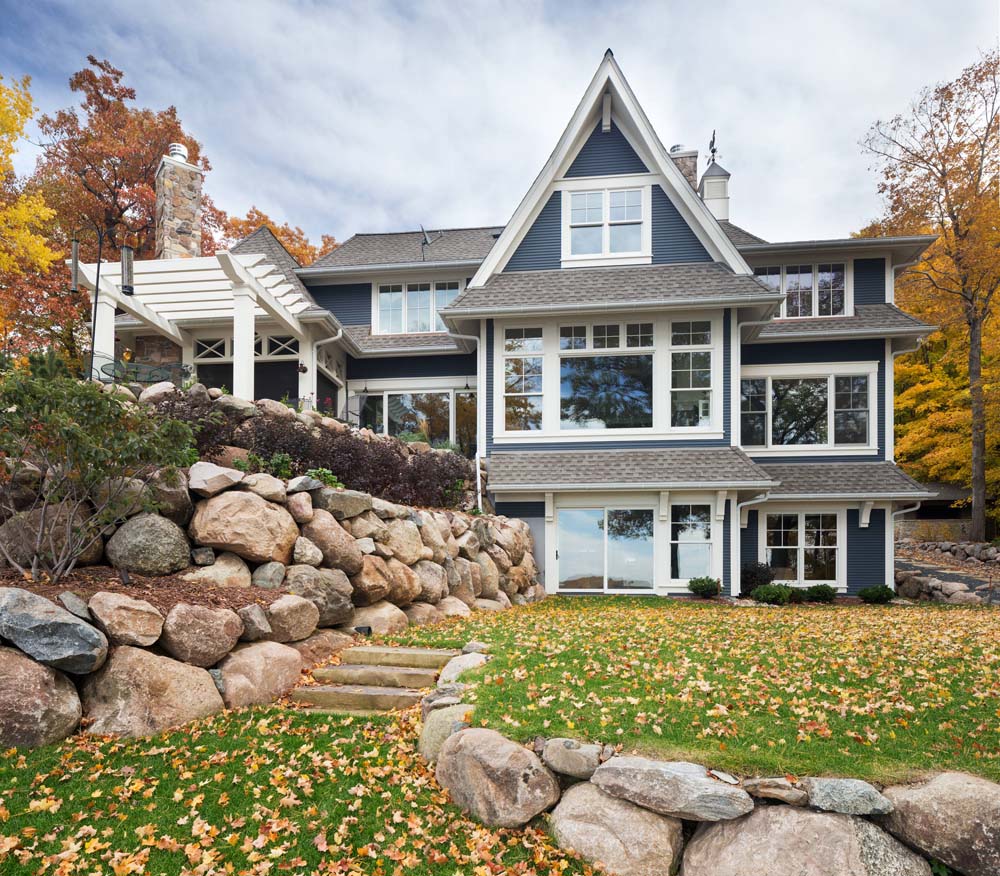
Sometimes, the terrain may pose a design challenge, even in construction. In this design, a rock wall garden complements the house design.
15. Create a Raised patio
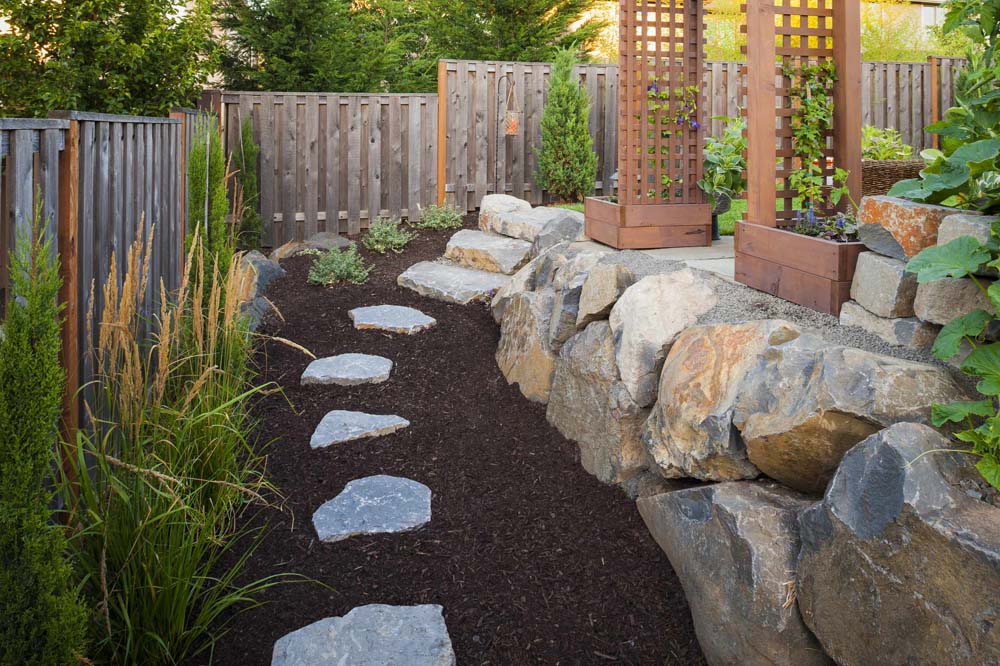
via Paradise Restored Landscaping
How about having a garden on your patio? This rock wall garden beautifies the space and doubles up as a patio.
16. Complement a Modern design
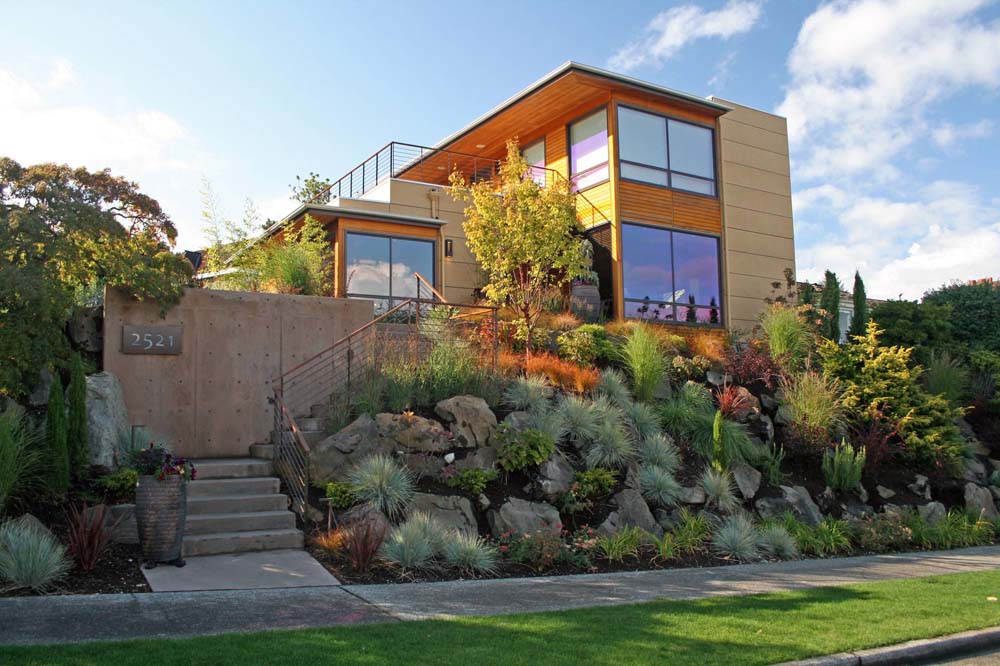
In most modern designs, space is usually limited, but not when you have a vertical garden. This vertical rock wall garden reduces the need for space while beautifying the area.
17. Stop Erosion
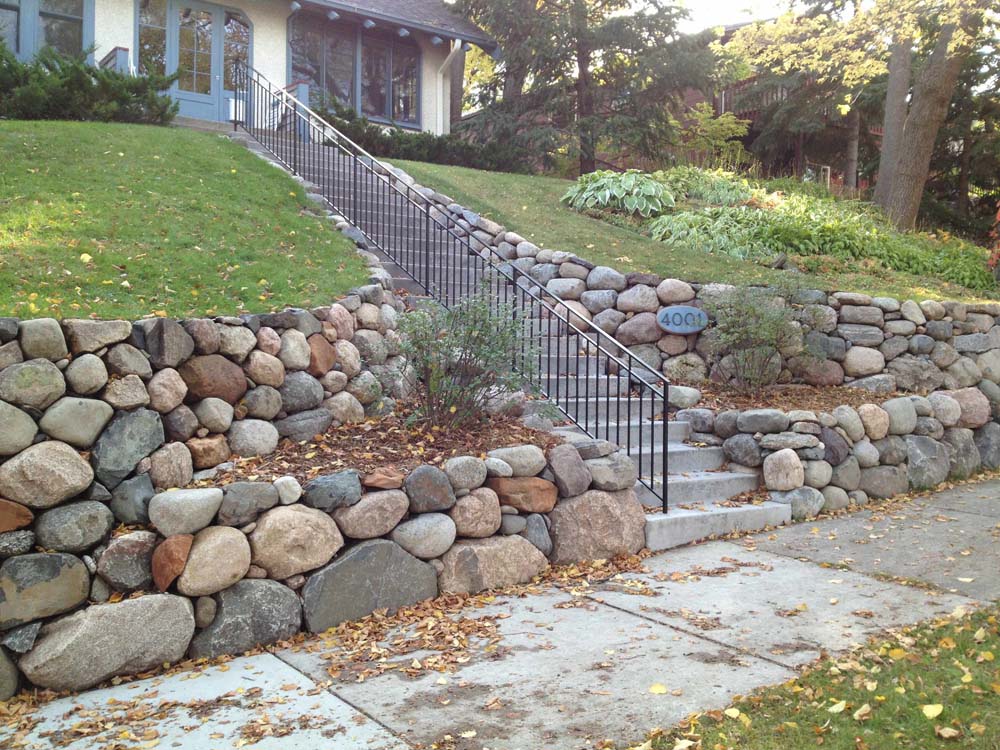
via English Stone
A retaining wall can be instrumental in holding together the soil and preventing erosion, as in this design with the house on top of the slope.
18. Define your Home Space
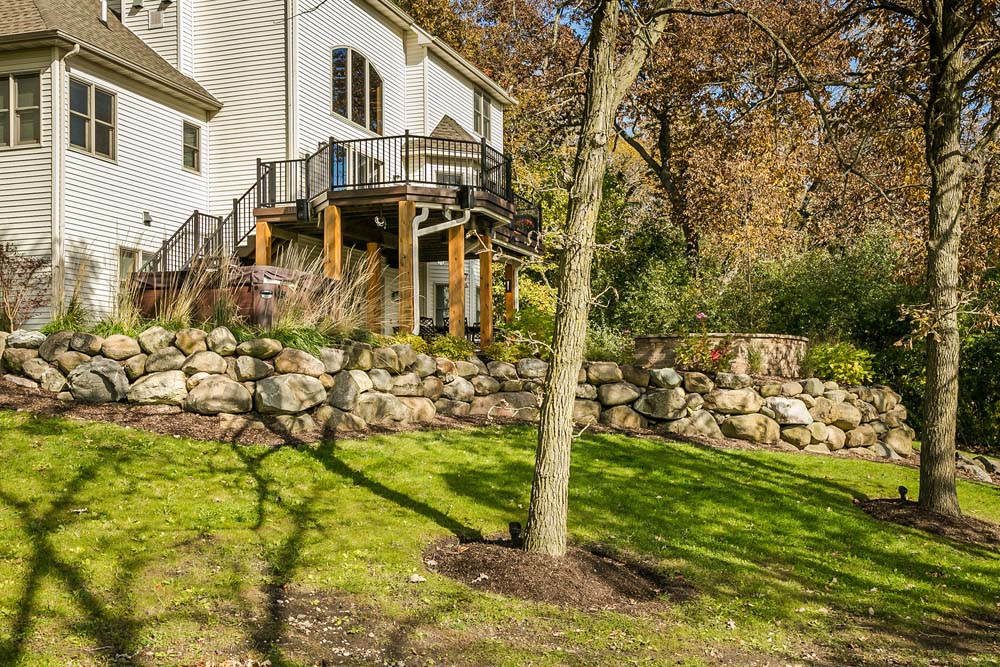
Even with a backyard, you may still wish for a defined home space; a retaining wall is the perfect way to achieve this. The retaining wall in this design separates the home’s area from the rest of the yard.
19. Distinct Spaces
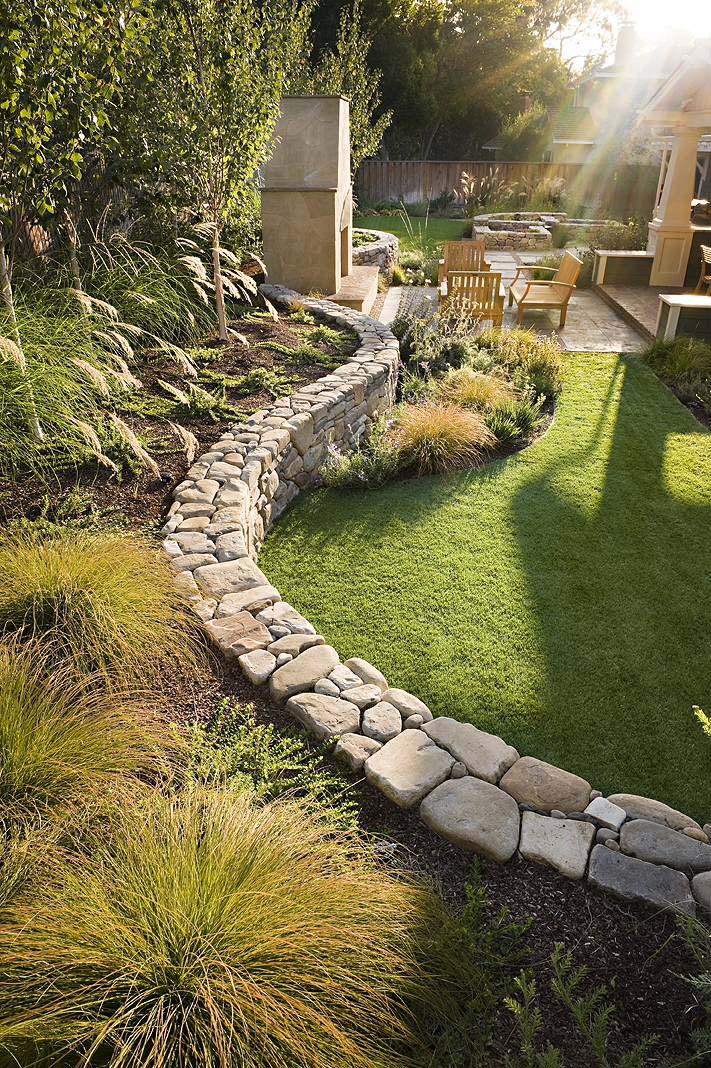
There are many ways to design your yard. A garden next to your outdoor space is a sure way to create the perfect chill spot. A retaining wall may separate the two spaces, making a clear distinction.
20. Create a Raised Garden in your Backyard
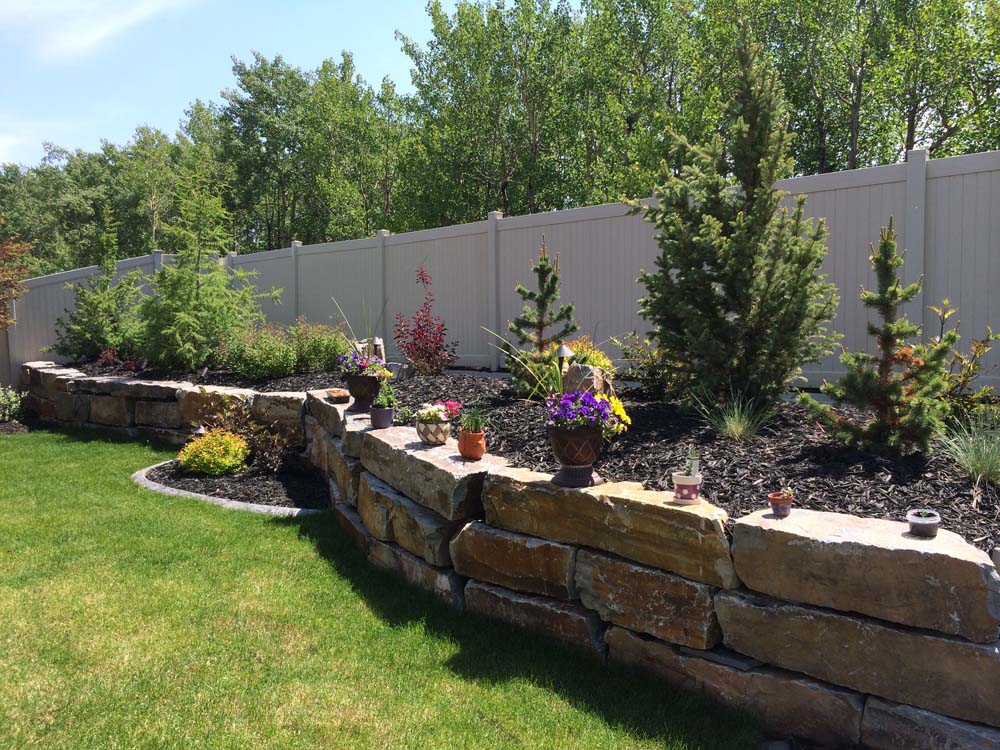
via Twisted Rock Terrascape & Design
A raised garden bed is a place to experiment with different plants and flowers and a dream for any garden. Constructing a retaining wall is the perfect way to get a raised flower bed.
21. Try some Flagstones
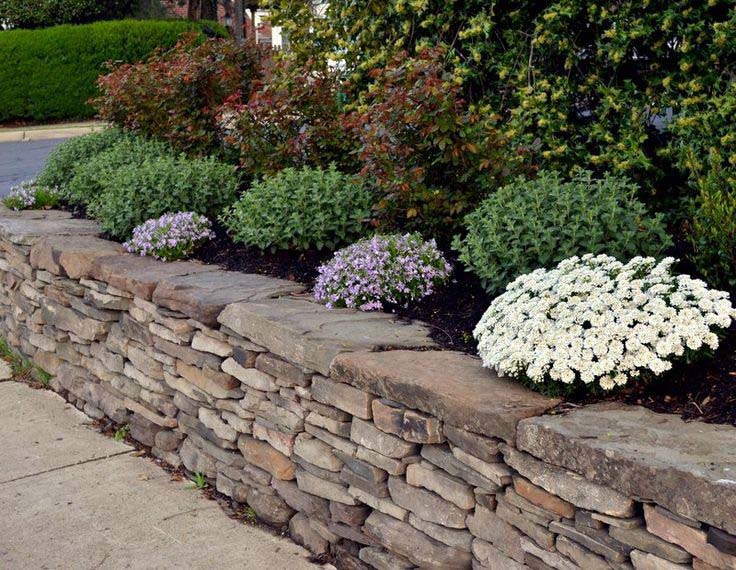
Using flagstones is a way to add some beauty to your rock garden and a long-lasting wall like in this mortarless retaining wall.
What You Need To Know About Rock Wall Gardens
Types of Rock Wall Gardens
These are different types of rock wall gardens you can try on your landscape based on your tastes and preferences:
- Dry stacked stone wall: A dry stacked stone wall gives your garden a natural feel and offers a long-lasting option. One of the main advantages of this design is that it doesn’t require many materials to create.
- Mortar Based: In this rock garden, designed mortar is used to hold the stones together. This is a good solution if you are skeptical of the stones holding together.
- Gabion walls are primarily created to stop soil erosion or retain slopes. This design has recently gained traction for many landscapers due to its versatility in creating planters, garden walls, and benches.
- Flagstone: Stacked flagstones add structure to your backyard and make it easy to design the garden.
Designing a Rock wall Garden
Before building a rock wall garden, there are several factors you need to take into account.
- The Site: Planning will be instrumental to creating a beautiful garden, so you should study the site and identify how the rocks will be placed, and the plants will grow.
- Materials: You need to consider materials based on the results you want to achieve. You can use several materials, including natural rock, brick, and flagstones.
- Drainage: Rock gardens fail mainly due to poor drainage, which results in the water exerting extra pressure on the rocks. Rock gardens should be designed such that water can freely drain from the rocks without eroding soil or plants.
- Soil Quality: Garden soil is the perfect choice for a rock garden. If you aren’t lucky to have some, your soil will need some amending. Perform a soil test before deciding on the amendments you’ll make on the substrate.
- Foundation: Ensuring the wall is built on a structurally sound foundation is crucial. You can use gravel or compacted earth for the foundation. Ensure the foundation extends at least a foot from the wall.
- Cost: Most importantly, it’s important to budget and estimate the prices you’ll incur while building the rock garden and the maintenance cost. This will ensure you are well-versed in accomplishing the design and maintaining it.
Tips for Selecting the Right Plants for a Rock Garden
Plants are the life of the garden, and for your garden to be lively, you’ll need to have the right plants. Here are some tips to help you with this task.
- Consider the climate: Choosing plants that’ll thrive in your garden would be best. Most rock gardens have plants of alpine origin.
- Simulate the Native Habitat: For the plants to thrive, it’s important to simulate their native habitat when growing them by providing them with similar conditions.
- Compliment the Rocks: To complement plants and rocks perfectly, grow smaller plants. You can add vertical height to the garden using perennials and ornamental grass.
- Contrast: To add visual interest to the garden, you can grow some flowers, such as tulips and alliums. Adding some evergreens is also an excellent way to ensure the garden maintains an all-year-round visual interest.
Building a Rock Wall Garden
Preparation
A clear plan before making the garden is crucial, as a rock garden is a significant investment of energy, time, and money.
Think of the kind of plants you want to grow, the conditions on the site, and the type of rock garden you want to create.
Visit established rock gardens to get some ideas on how to design yours.
Choose your stones
Once you identify the type of rock wall garden you want to create, it’s time to select the stones you’ll use for the project.
Sort the stones by size and shape according to what you’ll need. Generally, the best stones are reserved for the top, while the flutist stones are for the base. You can also mix sizes and shapes to create extra visual interest.
Set up a level line
Use a mason’s line to mark the front of the base of the wall. The width of the trench should be half the height of the wall.
Excavate the area
Dig at least 12 inches into the ground and create a level trench. During the excavation process, ensure you make a slope between the backside and front of the wall, which will help with drainage.
Use a level line to ensure the excavation is level as you go.
Add landscape fabric
Next, cover the excavated area with landscape fabric, lay it perpendicular to the wall, and extend it a few feet on the upper-level ground. Overlap the adjacent strips by about 6 inches.
Build the wall base
Use compatible gravel to fill the trench up to 5 inches. Level this gravel by raking it and then use a hand tamp to tamp it thoroughly. Now, add some coarse sand over the gravel up to an inch.
Place the rocks
Many gardeners will limit themselves to one rock material for a cohesive look. Using a local stone will help match your garden to the natural environment.
Start by placing the large rocks on the bottom and work your way up. Larger rocks will provide support and more stability to the garden.
Ensure you keep the rocks at an angle for better drainage. Once you have placed the rocks firmly in the soil, around each rock, prevent the rock from settling.
Lay the second course
On top of the first stone lay the second course of the stones, offsetting them such that the joints between them create a 1-over-2 pattern used in bricklaying. This strengthens the wall.
The front faces of the stones should be set ½ inch back from the first course. By creating this stair-step pattern, the wall can resist the force imposed by the slope. Ensure there’s no wobble on the stones as you place them; you can use small, flat rocks to prevent this.
Fill the spaces between the walls and slope
Use drainage gravel to fill the spaces between the wall and the slope. Backfill up to the highest course on the wall.
Install more courses
Lay the subsequent courses of stone using the same technique as used in the second course. As for the third layer, use “deadman” stones, which are long stones that stretch into the slope and tie up the wall into the earth.
These stones should be placed every 4 feet. If your wall is less than 30 inches, you’ll need only one layer of “deadman,” but plan for more if you want a taller wall.
Backfill
Trim the landscape to ensure it’s just below the top of the wall. Cover the fabric and backfill it with soil. Ensure the soil is about 6 inches.
Add plants
Excavate a hole along the surface of the rocks and gently place the plants you have selected to grow on your rock wall garden. Alpine plants establish better and survive longer, so they are an ideal choice.
Ensure you grow the plants in the appropriate soil mixture. Now, slowly refill the soil you excavated and place some grit on the base of the plant to prevent the crown from rotting.
Tips For Maintaining a Rock Wall Garden
Despite being made of rocks, which are long-lasting materials, rock wall gardens also need regular maintenance to ensure they are in tip-top shape.
Here are some tips for maintaining your wall:
- Regular inspection: It’s essential to inspect your stone wall garden as these rocks may sometimes get cracks that interfere with the entire integrity of the wall. Once you notice cracks in the stones, use cement to fill them.
- Remove Debris: Debris may interfere with the growth of plants or vegetation in your garden. When clearing the debris, check the drainage pipe if you have one installed in the garden. Blockages in the pipe may lead to water clogging in the garden, harming the plants.
- Watering: You’ll need to regularly water your plants according to the plant care guidelines for them to thrive. Use a water sprinkler to minimize soil erosion.
- Fill in Eroded Areas: If your garden exhibits signs of soil erosion, such as depression in the ground or around the wall, replace the missing soil as soon as possible.
The following are some of the common issues associated with rock wall gardens:
- Poor Drainage: Improper drainage can add extra weight and strain on a rock wall garden, especially if the water freezes and thaws.
- Ensure your wall is well drained by adequately designing and using materials such as pea gravel.
- A Sturdy Foundation: The foundation holds all the weight in a rock wall garden, and the whole wall could collapse if it’s not sturdy. Use proper footing on the foundation, such as crushed rock or compacted gravel.
- Wrong Plants: The lush greenery of a rock garden adds all the visual interest, so it’s essential to grow plants that’ll survive in the condition of a rock wall garden.

